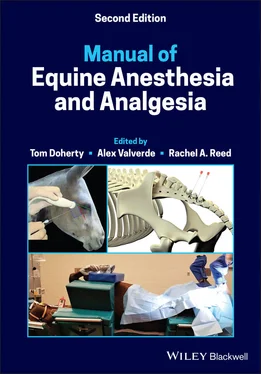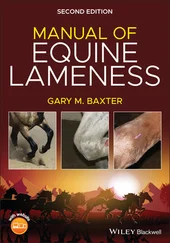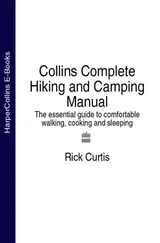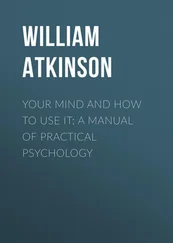Angiotensin III has an effect which is equipotent to angiotensin II in causing the release of aldosterone, but has less potent pressor effects.
Angiotensin IV has decreased systemic effects compared to angiotensin II, but has multiple functions in the nervous system.
It is released from the zona glomerulosa of the adrenal gland; it promotes sodium retention, leading to fluid retention and increased blood pressure.
It increases the excretion of K+ and H+.
It increases the release of ADH from the posterior pituitary.
Angiotensin‐converting enzyme (ACE) inhibitors (e.g. enalapril)
Decrease the activity of ACE, resulting in decreased formation of angiotensin II.
IV Effects of anesthetics on renal function
Virtually all anesthetic drugs modulate RBF and GFR by direct and indirect effects.GFR is likely to be reduced due to decreased RBF.The ability to excrete sodium is reduced. This is thought to be a result of inhibition of Na/K‐ATPase.Urine volume is usually decreased.
A number of factors are involved in initiating anesthetic‐induced changes in renal function, and the contribution of each factor is primarily dependent on the horse's physiologic state and the anesthetic regimen. Factors include:Decreases in cardiac output and arterial blood pressure.Increases in sympathetic outflow from renal nerves.Activation of the RAAS.Increased release of ADH.Direct renal effects of anesthetics.
Many drugs (or metabolites) have some degree of renal metabolism and/or excretion.Renal dysfunction may, in theory, prolong the effects of anesthetic drugs, but this is rarely of clinical importance.
Comment : It is important to consider the co‐morbidities associated with renal disease (e.g. azotemia, acid–base imbalance, electrolyte imbalance, anemia, coagulopathy, hypertension) when determining an anesthetic protocol.
A Changes in RBF with anesthetics
May partially result from the systemic changes invoked by anesthetics.
A redistribution of cardiac output occurs with an increase in flow to the vessel‐rich areas (e.g. brain) and a reduction of flow to the splanchnic system.
The effects of anesthetics on autoregulation and intrarenal blood flow are specific to the drug class and depends on renal perfusion pressure.
α1‐adrenergic receptors are numerous in the renal vasculature and modulate RBF by mediating vasoconstriction.
B Inhalational anesthetics
Most inhalational anesthetics have dose‐dependent effects on renal function.
In general, RBF is decreased.
All inhalants decrease GFR.
Urine production decreases with inhalational anesthetics, which increase secretion of ADH and favors fluid retention in the extravascular space.
Light planes of inhalational anesthesia can preserve renal autoregulation.
Renal vascular resistance increases with most anesthetics.
Nephrotoxicity is mainly a problem with “older” inhalants (e.g. methoxyflurane).Non‐steroidal anti‐inflammatory drugs (NSAIDs) and some antibiotics (e.g. aminoglycosides, tetracyclines) potentiate the nephrotoxicity of inhalants.
It undergoes extensive biotransformation (50–75%) in the kidney, producing free fluoride ion and oxalate.
Prolonged administration may result in polyuric renal failure.
The fluorinated anesthetics sevoflurane and enflurane have not been associated with a decrease in renal function post‐operatively.
Sevoflurane undergoes minimal biotransformation (2–5%) in the liver. Nevertheless, hepatic metabolism results in the formation of inorganic fluoride and an organic metabolite.Serum inorganic fluoride concentrations can attain values of 20–40 μmol/l after 2 MAC hours of exposure in humans, and >50 μmol/l after prolonged exposure.Values >50 μmol/l are considered to be nephrotoxic after exposure to methoxyflurane, as determined by a decrease in the kidney's concentrating abilities, with clinical signs of toxicity occurring at values >90 μmol/l.The difference in nephrotoxicity between the two anesthetic agents may be related to methoxyflurane undergoing intrarenal metabolism, whereas sevoflurane is primarily metabolized by the liver.Additionally, methoxyflurane is highly soluble in the tissues and takes many hours to be completely cleared from the body. Therefore, the area under the curve of exposure to fluoride is much larger with methoxyflurane than it is with sevoflurane.
Desiccated CO2 absorbents react with sevoflurane to form compound A, a vinyl ether.
Compound A causes nephrotoxicity in rats following prolonged exposure.
The amount of compound A formed is regulated by the concentration of cysteine conjugate β‐lyase, which transforms cysteine conjugates into toxic products.
The pathway of compound A production has not been described in the horse.
Little effect on RBF or GFR.
Diuresis results as alpha2‐adrenergic agonists:Inhibit ADH release, leading to a redistribution of aquaporin channels on the distal tubule and collecting duct.Inhibit renin release.Inhibit renal sympathetic activity.Inhibit tubular sodium reabsorption.Increase atrial natriuretic peptide release.
D Other injectable sedatives and anesthetics
Phenothiazines
Produce dose‐dependent hypotension via antagonism of alpha1‐adrenergic receptors.
Antagonize dopamine receptors, which can prevent dopamine‐induced increases in RBF.
Little effect on RBF or GFR.
Little effect on RBF or GFR.
In some species, morphine increases the release of ADH resulting in an inhibition of diuresis, and this is accompanied by an increase in chloride excretion.
Increase RBF and renal vascular resistance.
As the dose increases, renal sympathetic nerve activity increases. This decreases RBF while increasing renal vascular resistance.
Ketamine can inhibit dopamine transporter proteins in the kidney but the clinical significance is uncertain.
Ketamine and its metabolites are highly dependent on renal excretion.
Minimal effects on RBF or GFR.
E Intermittent positive pressure ventilation
Increases in intrathoracic pressure reduce venous return. This decreases right and left ventricular preload.Cardiac output decreases as a result.The effect on cardiac output is more pronounced in hypovolemic patients.
Baroreceptors become activated, initiating a cascade of neurohormonal mechanisms to stimulate the kidney to decrease GFR and increase tubular reabsorption.
Other mechanisms involved are:Release of ADH.Stimulation of the RAAS.Stimulation of the sympathetic nervous system.Inhibition of tonic vagal influences.
This results in decreased urine volume, decreased renal plasma flow, and retention of sodium and water.
Stress associated with anesthesia and surgery can result in the release of catecholamines, aldosterone, ADH, and renin.
This results in decreased RBF and GFR, leading to fluid retention.
These effects resolve over time after anesthesia.
There are several different classes of diuretics with different mechanisms of action, ultimately resulting in increased urine production.
Читать дальше












